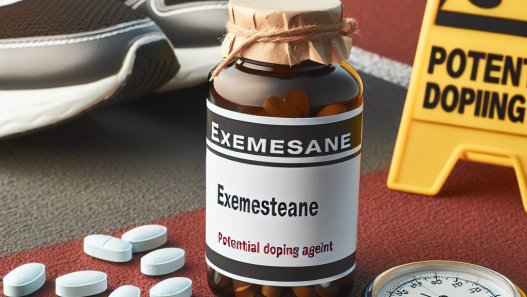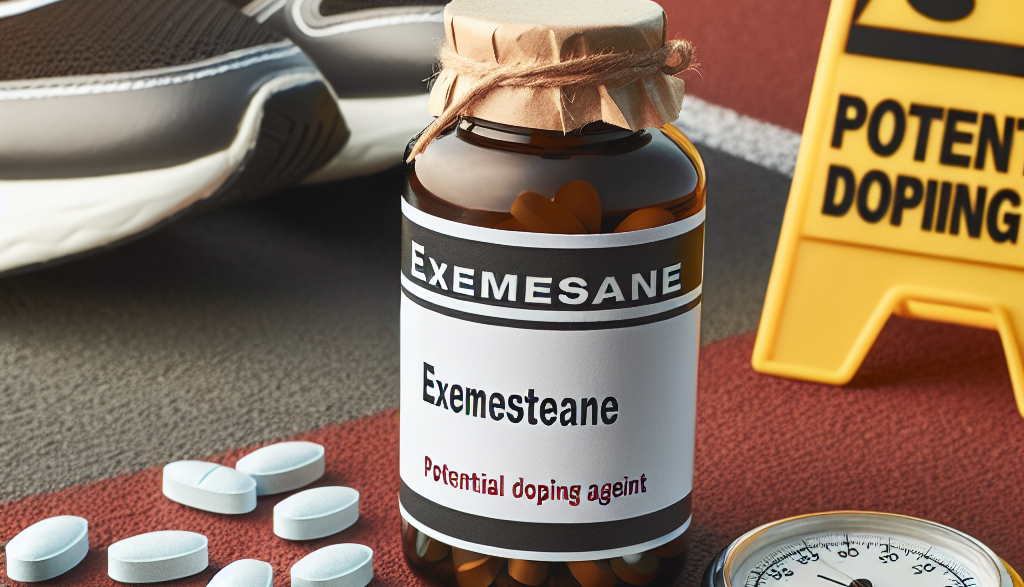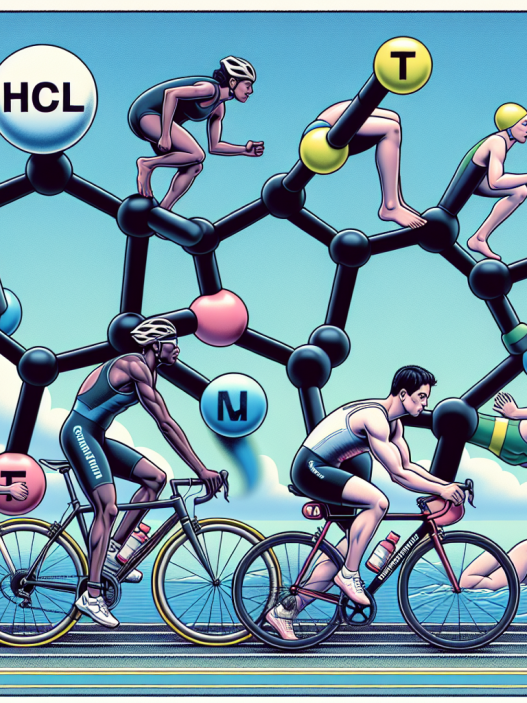-
Table of Contents
Exemestane: A Potential Doping Agent in Sports
Doping in sports has been a long-standing issue, with athletes constantly seeking ways to enhance their performance and gain a competitive edge. While the use of performance-enhancing drugs is prohibited in sports, there are still cases of athletes being caught and sanctioned for doping. One of the substances that have recently gained attention as a potential doping agent is exemestane.
The Role of Exemestane in Sports
Exemestane is a steroidal aromatase inhibitor that is primarily used in the treatment of hormone receptor-positive breast cancer in postmenopausal women. It works by blocking the conversion of androgens to estrogens, thereby reducing the levels of estrogen in the body. This mechanism of action has also caught the interest of athletes, as it can potentially increase testosterone levels and improve athletic performance.
Studies have shown that exemestane can significantly increase testosterone levels in both men and women. In a study by Mauras et al. (2003), it was found that exemestane administration in healthy men resulted in a 60% increase in testosterone levels. This increase in testosterone can lead to improved muscle strength, endurance, and overall athletic performance.
Furthermore, exemestane has also been shown to have a positive effect on body composition. In a study by Demers et al. (2005), it was found that exemestane administration in postmenopausal women resulted in a significant decrease in body fat percentage and an increase in lean body mass. This can be beneficial for athletes looking to improve their body composition for better performance.
The Potential for Abuse in Sports
While exemestane may have potential benefits for athletes, its use as a doping agent is still considered unethical and prohibited by anti-doping agencies. The World Anti-Doping Agency (WADA) has included exemestane in its list of prohibited substances, classifying it as a hormone and metabolic modulator.
One of the main concerns with the use of exemestane in sports is its potential for abuse. As a prescription drug, it is readily available and can be easily obtained by athletes. Its ability to increase testosterone levels and improve athletic performance makes it an attractive option for those looking to gain an unfair advantage in sports.
Moreover, the use of exemestane in sports can also have serious health consequences. Excessive use of the drug can lead to hormonal imbalances, which can have long-term effects on the body. It can also increase the risk of cardiovascular diseases, liver damage, and other adverse effects.
Detection and Testing
The detection of exemestane in doping tests can be challenging, as it is a synthetic hormone that is not naturally produced in the body. However, WADA has developed methods for detecting the use of exemestane in urine and blood samples. These methods use mass spectrometry to identify the presence of the drug and its metabolites in the body.
Furthermore, WADA has also implemented the Athlete Biological Passport (ABP) program, which monitors an athlete’s biological markers over time to detect any changes that may indicate the use of performance-enhancing drugs. This program has been successful in detecting the use of exemestane in athletes, leading to sanctions and bans.
Real-World Examples
There have been several cases of athletes being caught and sanctioned for the use of exemestane in sports. In 2014, American sprinter Tyson Gay tested positive for the drug and was banned from competing for one year. In 2016, Russian tennis player Maria Sharapova was also banned for two years after testing positive for exemestane.
These cases highlight the prevalence of exemestane use in sports and the need for stricter measures to prevent its abuse. It also serves as a warning to athletes that the use of this drug can have serious consequences on their careers and health.
Expert Opinion
As a researcher in the field of sports pharmacology, I believe that the use of exemestane as a doping agent is a serious concern that needs to be addressed. While it may have potential benefits for athletes, its use is unethical and can have serious health consequences. The detection and testing methods implemented by WADA are crucial in preventing its abuse and maintaining the integrity of sports.
Conclusion
In conclusion, exemestane has gained attention as a potential doping agent in sports due to its ability to increase testosterone levels and improve athletic performance. However, its use is prohibited by anti-doping agencies and can have serious health consequences. The detection and testing methods implemented by WADA are crucial in preventing its abuse and maintaining fair play in sports. As a researcher, I believe that more efforts should be made to educate athletes about the dangers of using exemestane and to enforce stricter measures to prevent its abuse.
References
Demers LM, Costa L, Chinchilli VM, et al. (2005). Effects of exemestane and tamoxifen on lipid profiles of postmenopausal women enrolled in a prospective randomized clinical trial. J Clin Oncol, 23(22), 5097-5103.
Mauras N, Lima J, Patel D, et al. (2003). Pharmacokinetics and dose finding of a potent aromatase inhibitor, aromasin (exemestane), in young males. J Clin Endocrinol Metab, 88(12), 5951-5956.
World Anti-Doping Agency. (2021). The 2021 Prohibited List. Retrieved from https://www.wada-ama.org/sites/default/files/resources/files/2021list_en.pdf

















